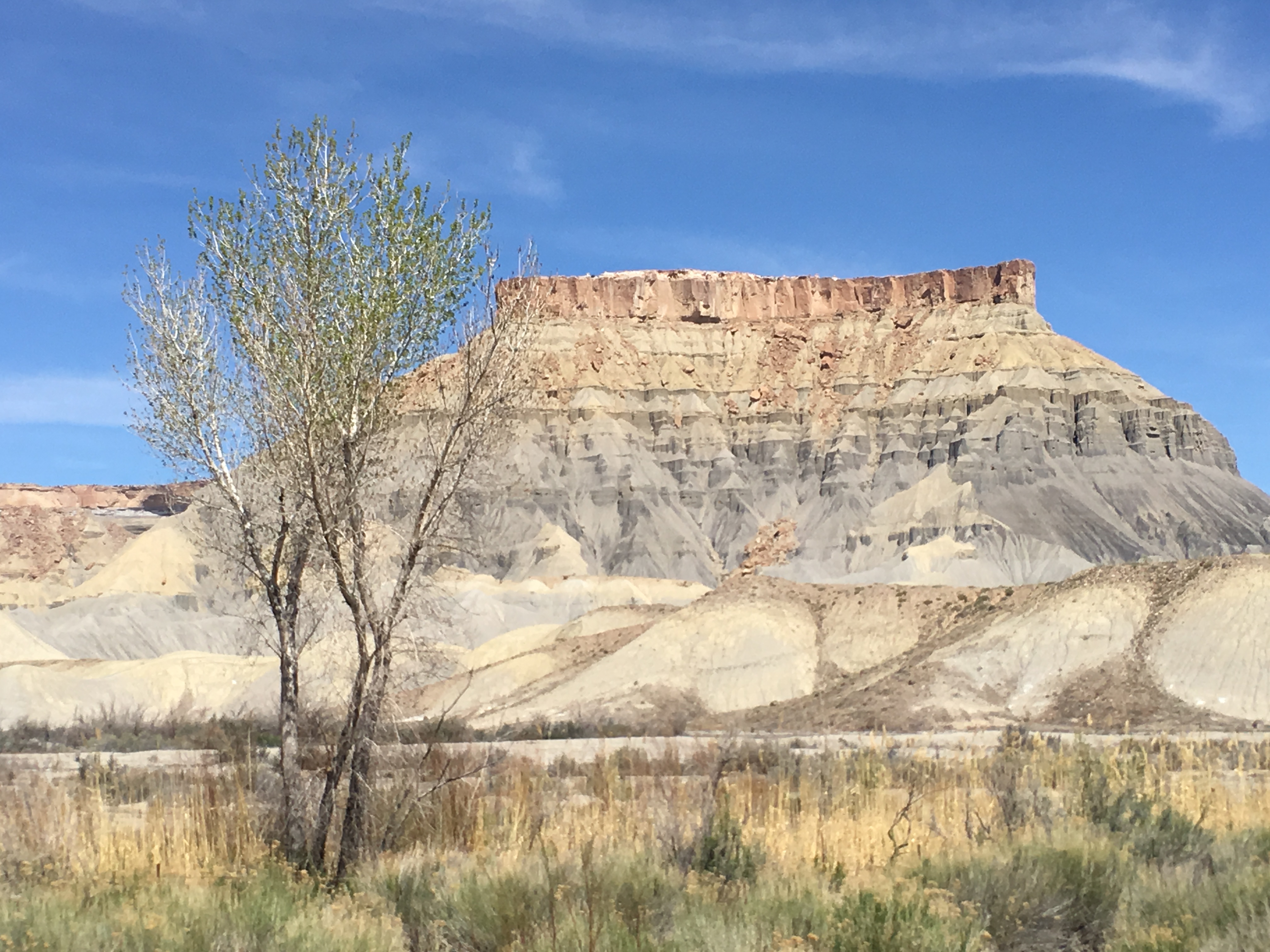This was my favorite of the three Utah national parks on this trip. For whatever reason, I really wanted to come here. Everybody I talked to about Utah has been to Bryce and Zion or Canyonlands and Arches. I only knew one person whose parents made it to Capitol Reef on a separate trip. It’s the least crowded of Utah’s Mighty Five since it’s right in the middle of the state and not near anything. Bryce Canyon NP is another 2.5 hours from here.
Although a 2.5-hour car ride from Moab, it is scenic. Even the 22 miles on I-70 offered breathtaking vistas with no billboards or commercial establishments. Once off the interstate, we headed south on Hwy 24, stopping in Hanksville for lunch at Duke’s Slickrock Grill. I can’t imagine living in a town with three restaurants, one hotel and two gas stations, but the people here were friendly as ever. The hostess mentioned seeing the hoodoos at nearby Goblin Valley State Park, but unfortunately we didn’t have time.
Hickman Bridge Trail
Capitol Reef got its name from the large fin or reef like cliffs that shoot up from the landscape. It’s different from the other parks and well worth the visit. We started with the Hickman Bridge Trail, a moderate 1.8-mile round trip to a natural bridge. Although it looks like an arch, a natural bridge is a type of arch that was primarily formed by a stream or body of water. When we left the parking lot, we hiked by a fast flowing Fremont River.
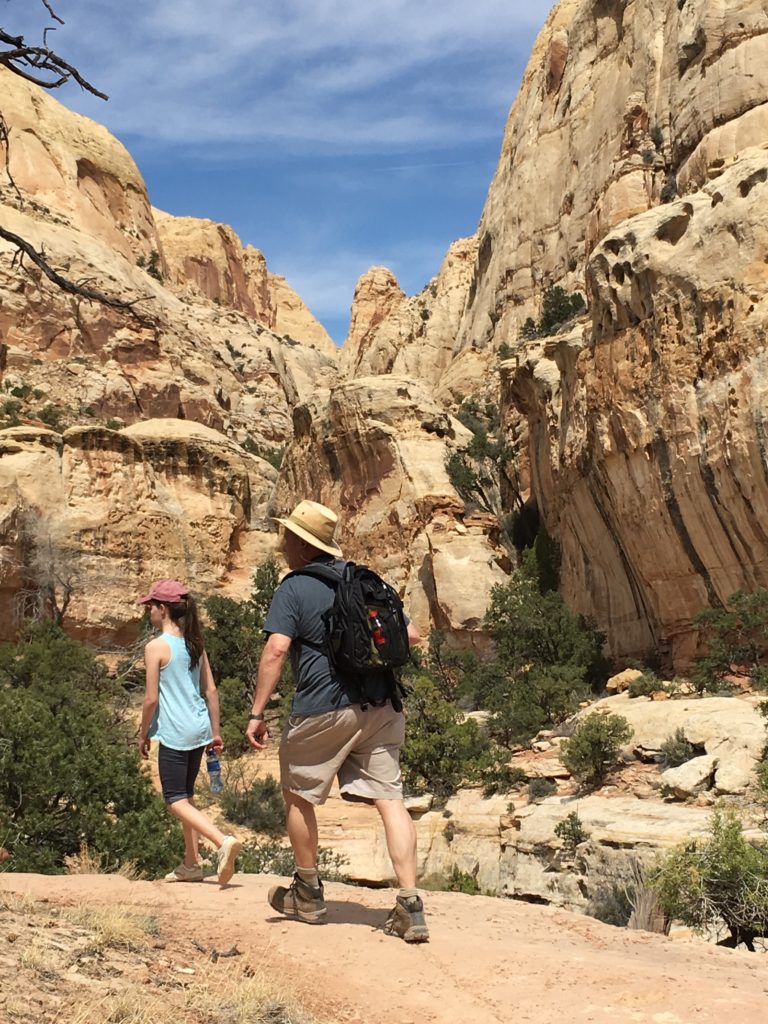
Although the hike is considered moderate, children can easily do this hike. Just take lots of water and wear a hat. The temps reached 80 degrees on this day in April, but I could imagine the over 100 degree temps in the summer. Towards the end is a small loop under and around the natural bridge. Another difference between an arch and a bridge is that a natural bridge has a flat top over an opening, resembling the shape of a man-made bridge. I failed to inform my family that we were hiking to a natural bridge and everyone was surprised it was made out of rock. This was the only section of the park that reminded me a bit of Arches NP.
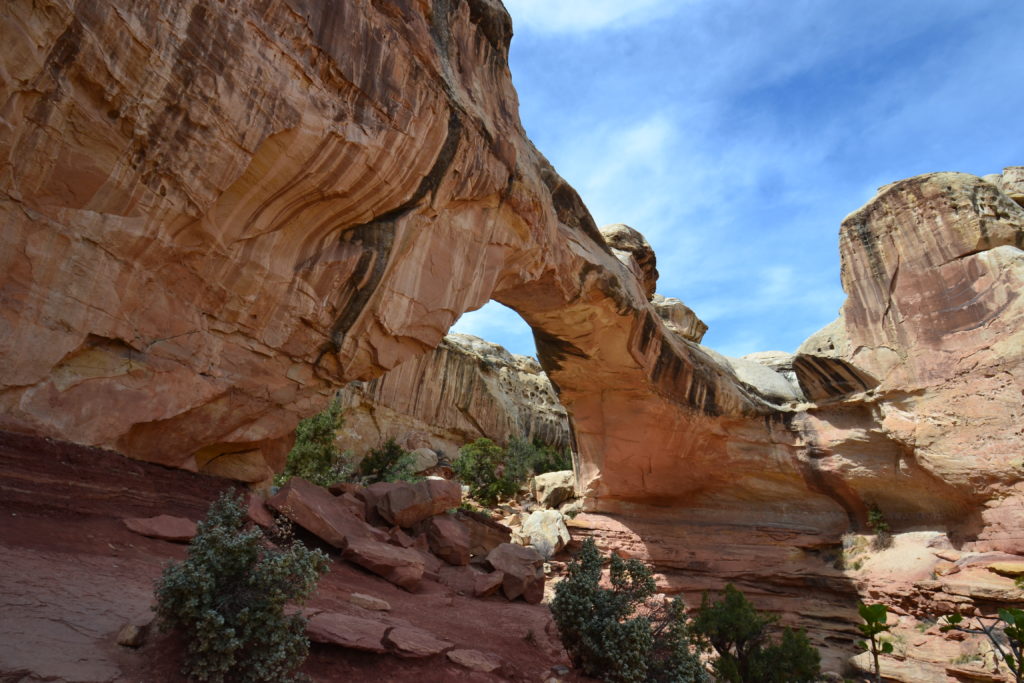
Historic Fruita
Next we drove by the historic Fruita school-house, which was built in 1896 and served as a gathering spot, church and school until the 1940’s. Over time, the NPS bought more of the Fruita farms, leaving the schoolhouse, a barn and a few other buildings intact.

We then stopped at the visitor center and were told to continue the 10-mile (one-way) scenic drive. At the end of the scenic road is the 2.4-mile Capitol Gorge Road. Although it’s a dirt road, the ranger told us that any car could handle hit. Driving on the dirt path gave us an off-roading type adventure through Wingate Sandstone. I was amazed to see several campers driving on the narrow road. At the end was a parking lot and trailhead for the 2.0-mile round-trip Capital Gorge Trail. Our crew was getting hungry so we skipped this hike, although it was classified as easy.
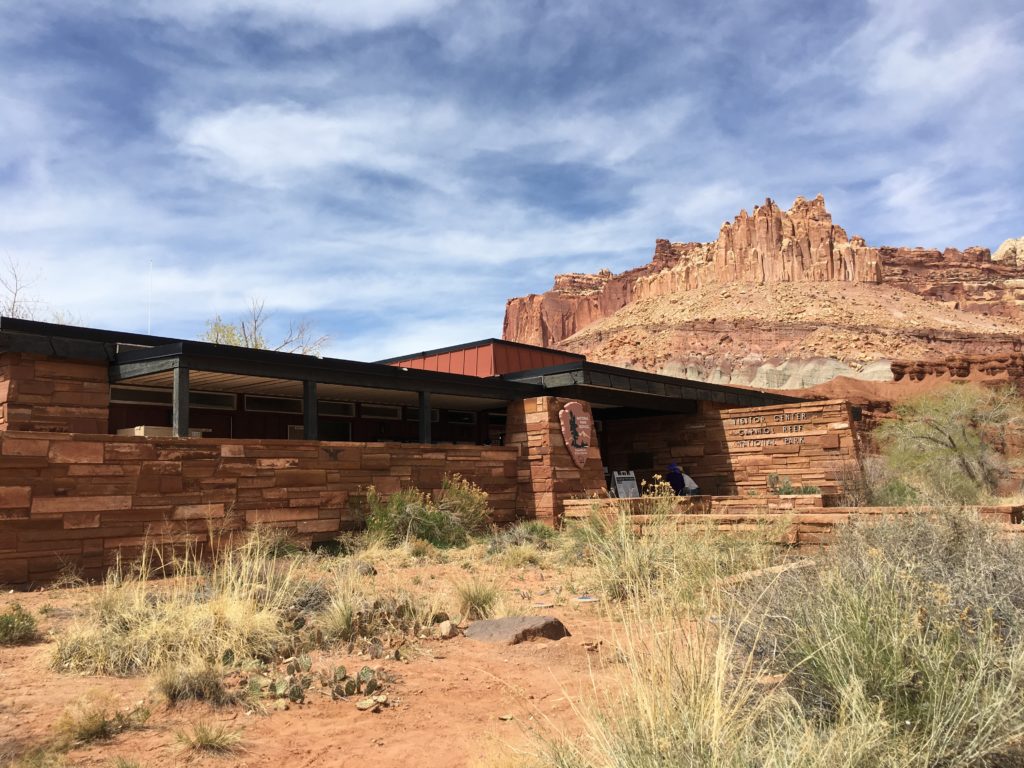
Gifford House Museum and Store
On the way back along the scenic road, we stopped to admire the orchards. In the summer, visitors can pick the many fruits including cherries, peaches, pears and apples. Across the street from these orchards is the Gifford House Museum and Store.
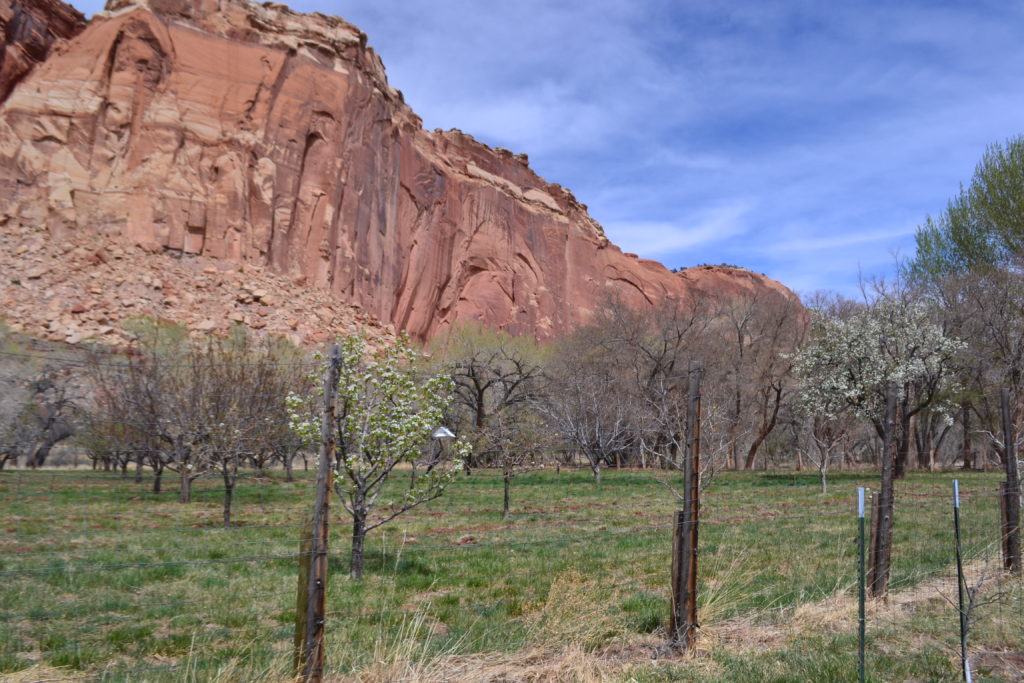
The kids groaned when they heard we had to go into a museum, but it’s more of a cute store that sells gifts and snacks. The back room has some items from the Fruita era, but it’s known for selling pies made from the fruit grown in the park. We were torn between peach pie and cherry pie, but tossed a coin for cherry. It was some of the best I’ve ever had! We sat at a picnic table and enjoyed the cavernous cliffs jutting out of the landscape.
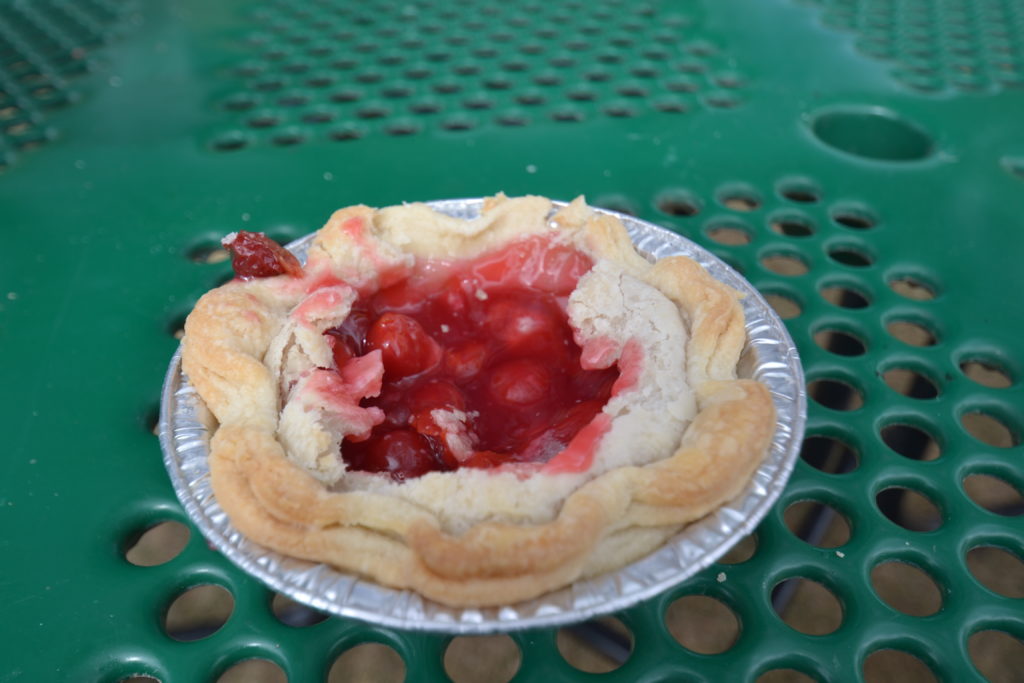
Lastly, we took a left turn did a quick drive past Chimney Rocks and went to the Goosenecks overlook before heading back to Moab. Like Arches and Canyonlands, there is no lodging in the park. Torrey is the nearest town, west of Capitol Reef. For more information, click on Capitol Reef National Park here.
